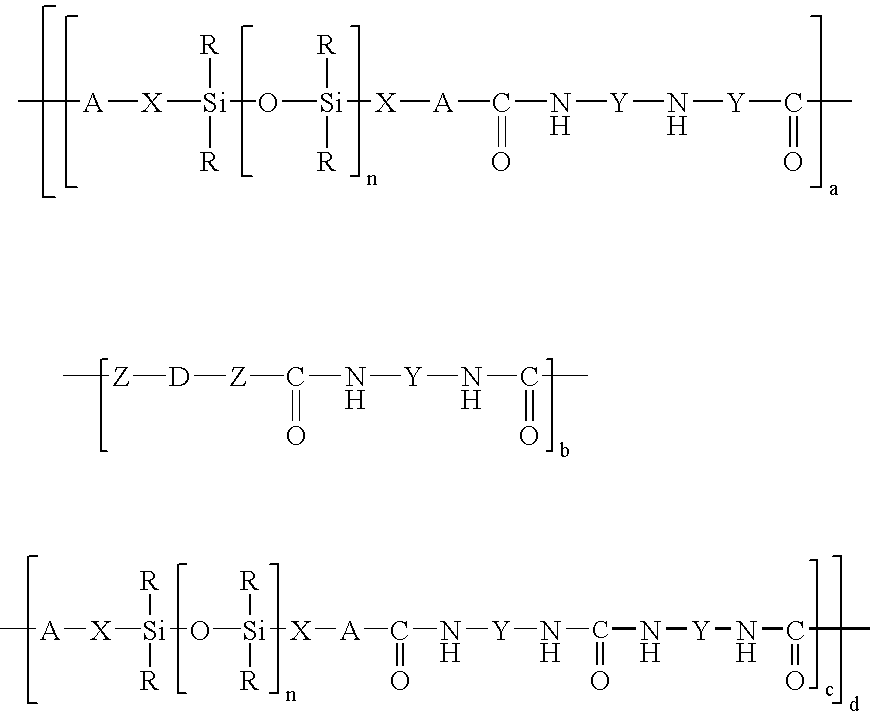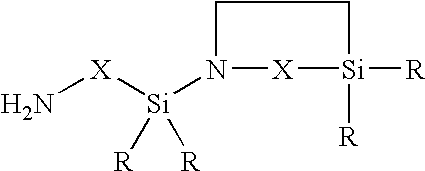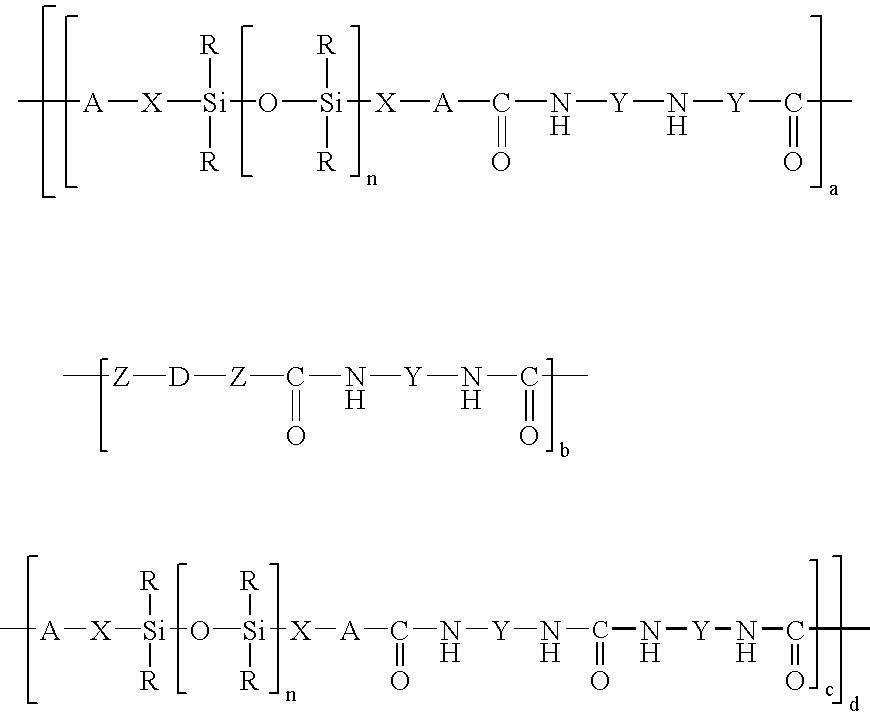Organopolysiloxane/polyurea/polyurethane block copolymers
a technology of polyurea and polyurethane, which is applied in the direction of coatings, adhesives, etc., can solve the problems of increasing the complexity of the apparatus in processing, the insoluble nature of the product after processing, and the limited pot life of the composition
- Summary
- Abstract
- Description
- Claims
- Application Information
AI Technical Summary
Benefits of technology
Problems solved by technology
Method used
Image
Examples
example 1
[0069]A 2000 ml flask with dropping funnel and reflux condenser was charged with 1500 g of bishydroxy-terminated polydimethylsiloxane (molar weight 3000 g / mol). Subsequently at room temperature 116 g of 1-(3-aminopropyl-1,1-dimethylsilyl)-2,2-dimethyl-1-aza-2-silacyclopentane were added dropwise and the mixture was then left to stand for 1 hour. This gave a glass-clear bisaminopropyl-terminated polydimethylsiloxane having a molecular weight of 3200 g / mol which according to 29Si—NMR was free of Si—OH groups and had no inherent odor at all.
example 2
[0070]A 2000 ml flask with dropping funnel and reflux condenser was charged with 1080 g of bishydroxy-terminated polydimethylsiloxane (molar weight 10 800 g / mol). Subsequently at a temperature of 60° C. 23.2 g of 1-(3-aminopropyl-1,1-dimethylsilyl)-2,2-dimethyl-1-aza-2-silacyclopentane were added dropwise and the mixture was then stirred at 60° C. for 5 hours. Cooling gave a glass-clear bisaminopropyl-terminated polydimethylsiloxane having a molecular weight of 11,000 g / mol which according to 29Si—NMR was free of Si—OH groups and had no inherent odor at all.
example 3
[0071]A 250 ml flask with dropping funnel and reflux condenser was charged with 40 g of bisaminopropyl-PDMS (molar weight 3200) in a solvent mixture made up of 80 ml of dry THF and 20 ml of dimethylacetamide. Subsequently at room temperature a solution of 2.33 g of methylenedi-p-phenyl diisocyanate in 20 ml of dry THF was added dropwise and the mixture was then boiled under reflux for 1 hour. After the solution had been cooled the polymer was precipitated by dropwise introduction into hexane. This gave a clear copolymer having a molecular weight of Mw 161,000 g / mol, which showed a softening range at 154° C. in TMA and had no inherent odor.
PUM
| Property | Measurement | Unit |
|---|---|---|
| pressures | aaaaa | aaaaa |
| molar weight | aaaaa | aaaaa |
| molar weight | aaaaa | aaaaa |
Abstract
Description
Claims
Application Information
 Login to View More
Login to View More - R&D
- Intellectual Property
- Life Sciences
- Materials
- Tech Scout
- Unparalleled Data Quality
- Higher Quality Content
- 60% Fewer Hallucinations
Browse by: Latest US Patents, China's latest patents, Technical Efficacy Thesaurus, Application Domain, Technology Topic, Popular Technical Reports.
© 2025 PatSnap. All rights reserved.Legal|Privacy policy|Modern Slavery Act Transparency Statement|Sitemap|About US| Contact US: help@patsnap.com



